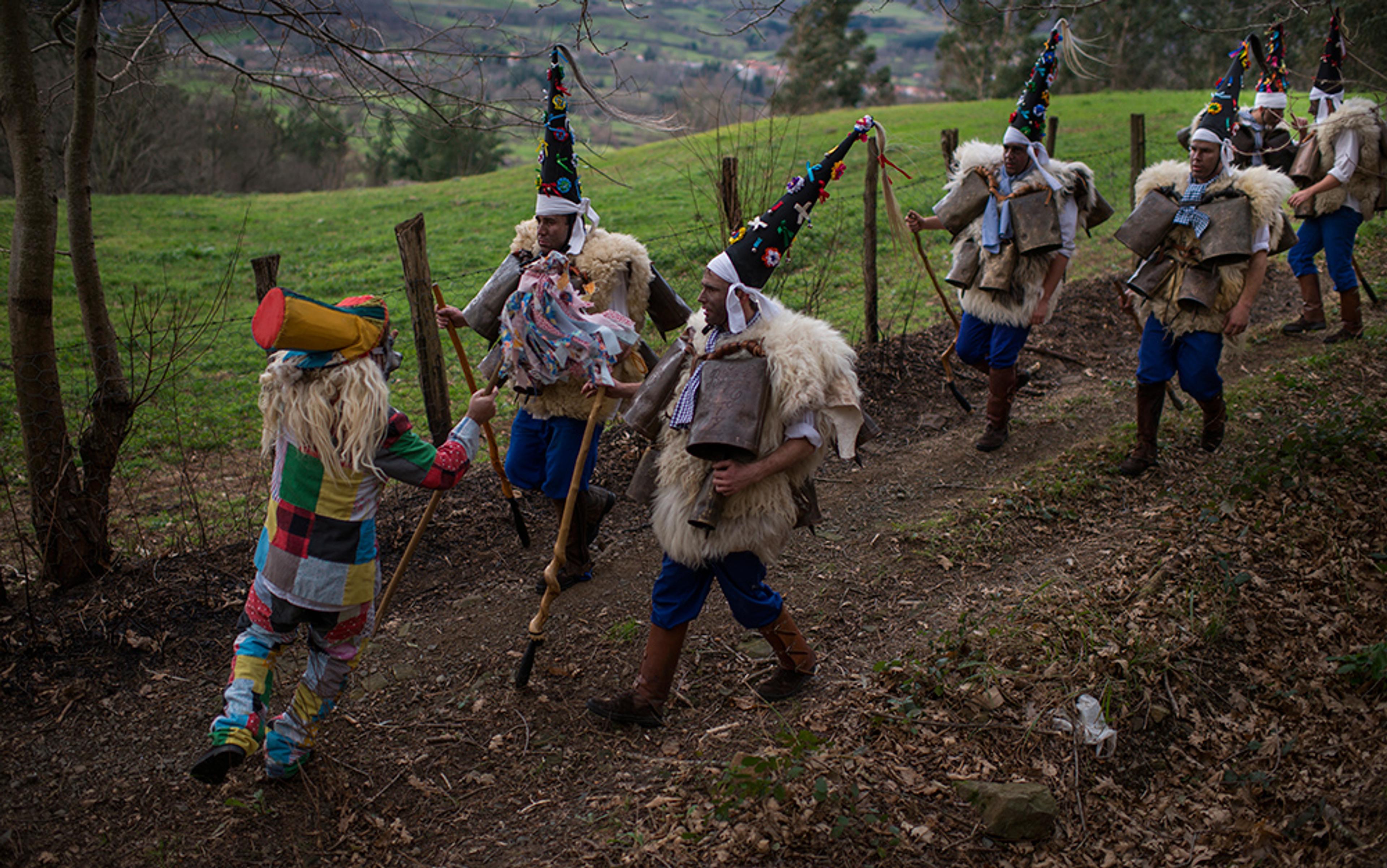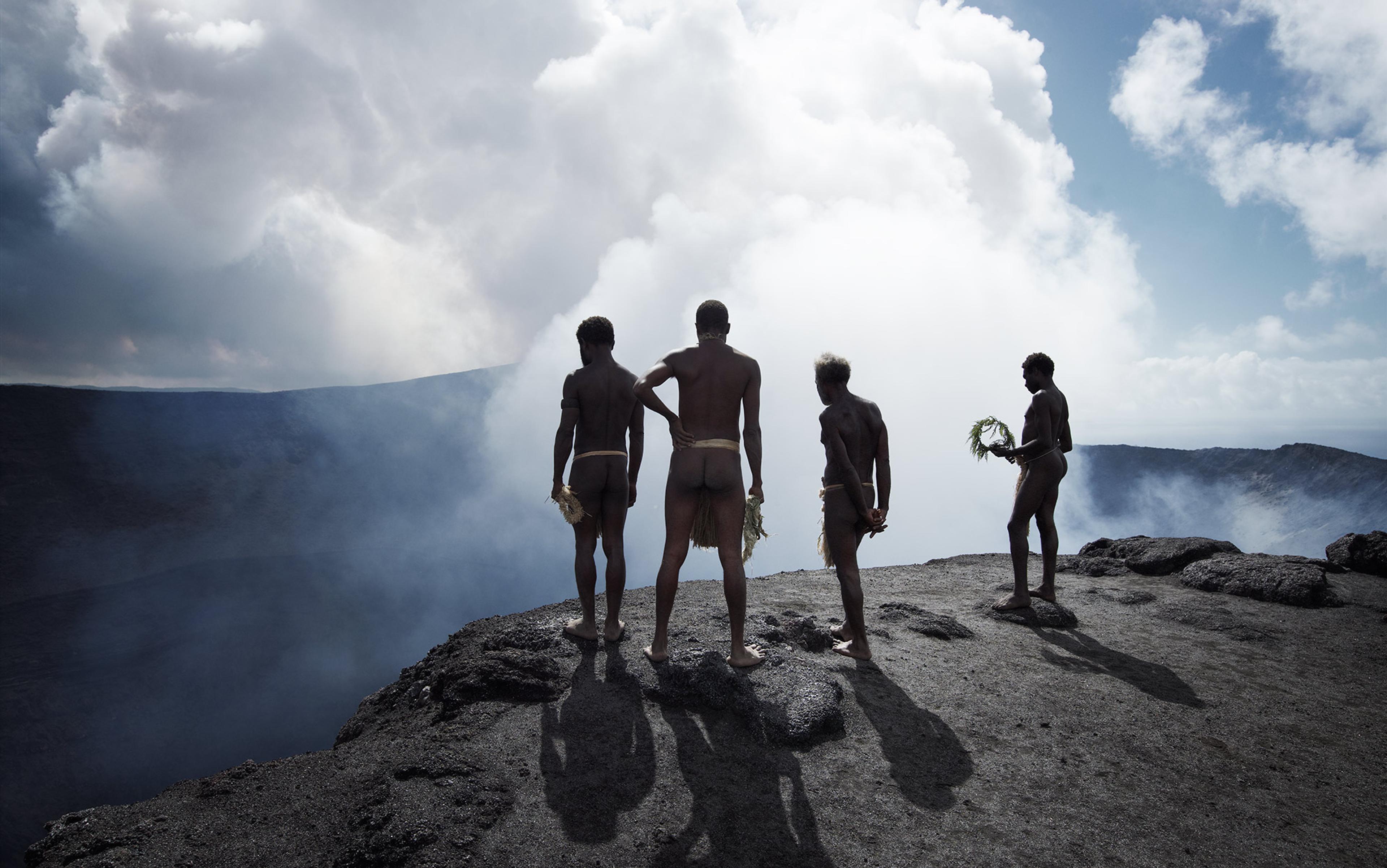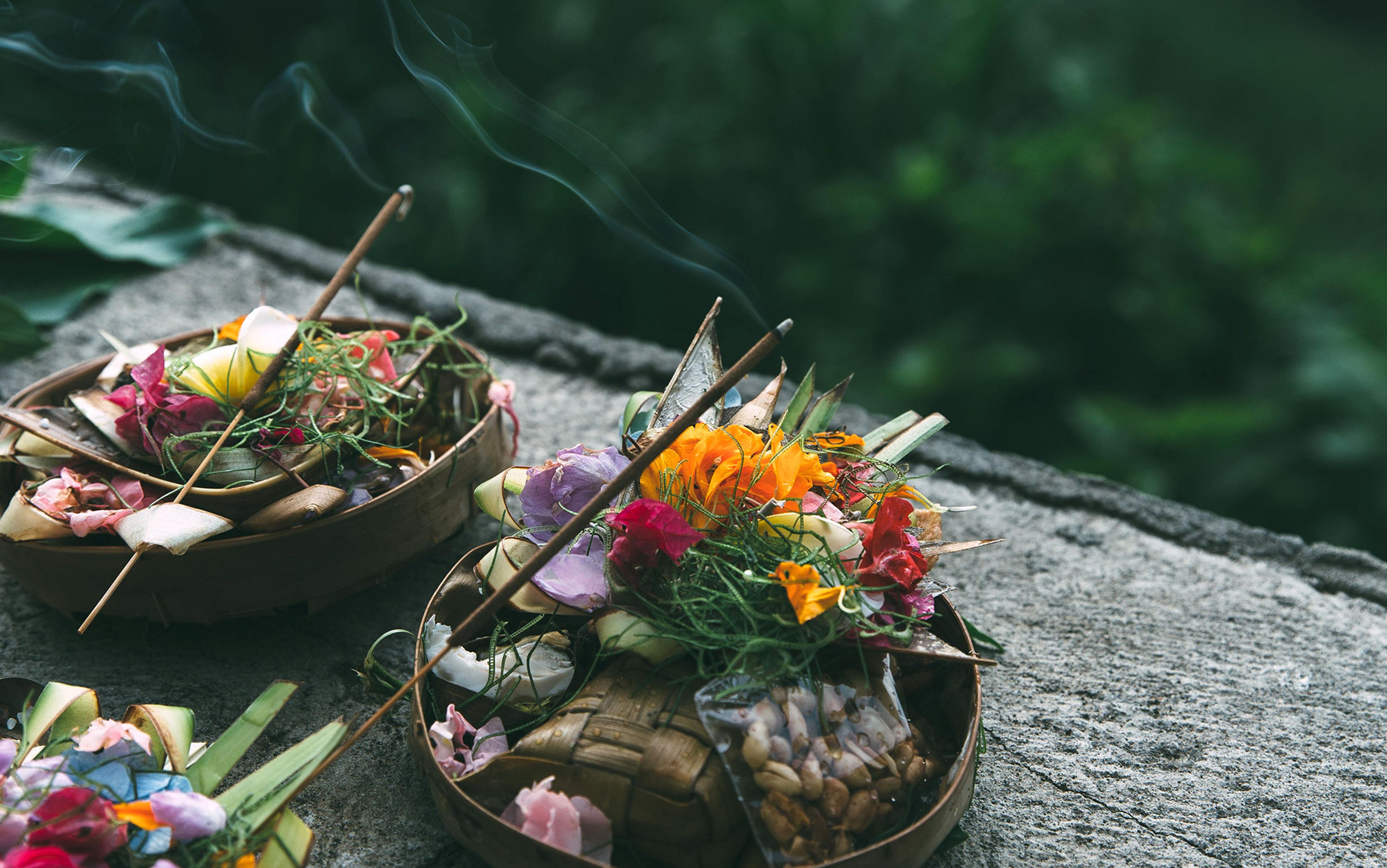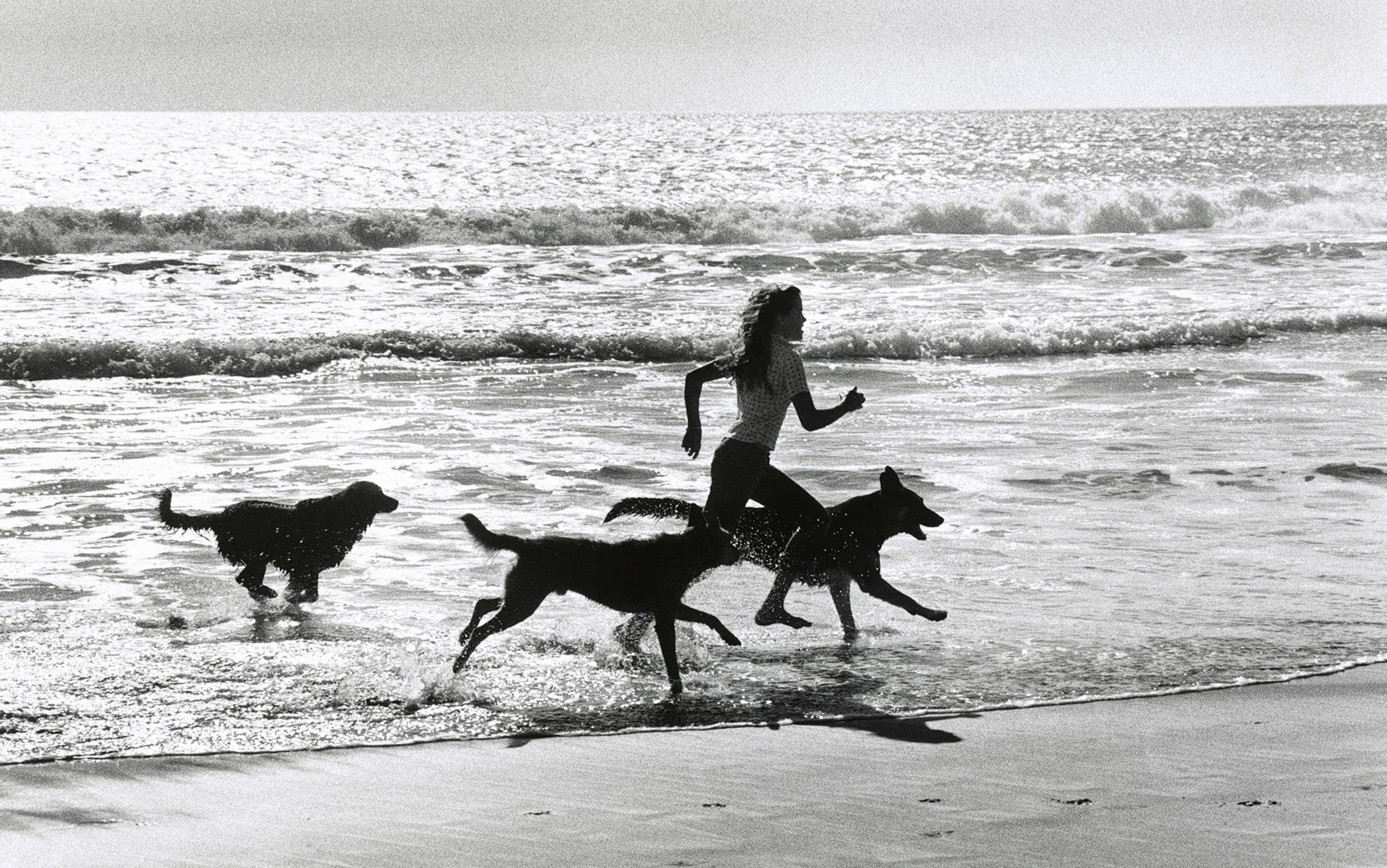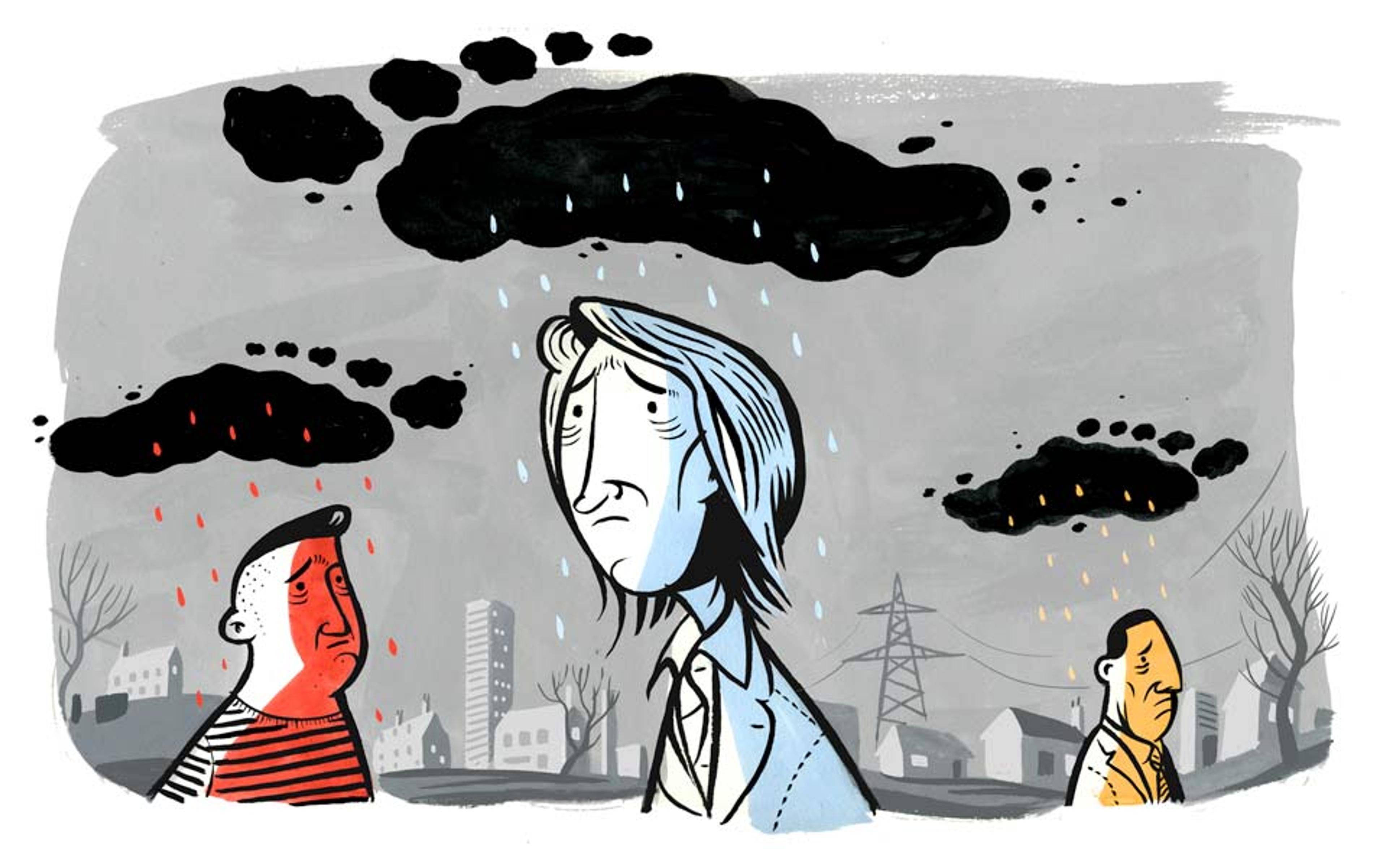We had expected something wilder – sillier, perhaps, with dancing and swivelling eyes. But Deva the tall, clean-shaven shaman could have passed for a web designer, if not for the drum he was beating and the fact that we were lying on the floor in a cavernous hall of the Museum of Natural History in Berlin between a stuffed bison and a resplendent stag.
As Deva intoned, the darkening sky outside began to rumble and the first drops spattered against the old window panes. He announced that we were embarking on a journey to meet our totem animals, and with these words the heavens split open, spilling lightning and rain in dramatic abundance.
We had hoped that Deva’s ritual would help us – two rationally minded skeptics – to reconnect with nature. Our quest had begun in the mellower surrounds of Sarah’s small city garden, where we had been discussing feelings common to most bourgeois urbanites: angst about the seemingly unstoppable environmental catastrophe, and guilt at our part in it. Just as we were asking what might actually make us change how we live, the local church bells started ringing. ‘The Church has got it right with its bells and daily prayers and Sunday services – people are weak and need constant reminding of their higher goals,’ Sarah said. ‘Exactly,’ Stephen replied, ‘we need rituals to keep us on the right path.’
Indeed, it’s striking, even to a skeptic, that every culture in human history has used rituals to shape and entrench its norms. Equally, it is clear that arguments alone are not convincing us to live within the bounds of the Earth’s resources. Few manage to make the lifestyle changes necessary to slow climate change, rein in habitat loss or minimise pollution (and we authors are not among those few). So that Sunday morning we resolved to find out whether rituals could help us to close the gap between what we actually do and what we ought to do.
Initially we had to overcome a certain unease. It is a paradoxical truth that rituals look completely normal from the inside (think putting a chopped-down tree in your living room at Christmas), but look rather absurd from the outside (think Vanuatu’s land diving). In seeking new rituals (at least, new to us), we would have to overcome that sense of absurdity. We were somewhat encouraged by the thought that we were unlikely to encounter anything as bizarre as the Eucharist must seem to the non-Christian – kneeling in front of a statue of a man being tortured to death in order to consume his body and blood and therefore be redeemed of wrongdoing.
We were, after all, already doing at least one ecological ritual every day: recycling our household waste. The performance of putting a tin can in one bin and potato peel in another suggests a ritualised behaviour: we do it despite not really knowing what happens to the rubbish when it leaves our homes, and despite being aware that the world will not end – nor will we be punished – if we wrongly dispose of the potato peel. We sort out rubbish because the daily repetition, combined with a sense of higher purpose, has caused us to internalise it as a necessary act. When we accidentally put the tin can in the wrong container, we feel a pang of guilt – enough to make us reach into a pile of refuse and fish out the offending item.
It is typical of rituals that people experience a sense of rightness when they are followed and wrongness when they are not. That wrongness is not merely practical – like failing to turn the key in an ignition when you want to start a car and therefore not achieving an immediate goal. It is also moral and emotional – as when a friend doesn’t say goodbye to you properly but just walks out or hangs up. Rituals act to align our values, our behaviour and our expectations of others. They are also notoriously tricky to define precisely, but usually involve acts that seem unnecessary or arbitrary from a practical point of view (such as putting candles on a birthday cake), and are repeated according to an established pattern (like wearing a white wedding dress). Their success is measured in their ability to impose order on a chaotic world.
Experimental psychology has recently provided some simple demonstrations of the power of ritual behaviour. In one study, a group of participants was asked to perform a ritual (a sequence including table-rapping and deep breathing) before eating three carrots. Other participants were asked to perform random gestures before eating their carrots. Those who performed the ritual rated their appreciation of the snack consistently higher than the others. The carrots tasted better to them. As the priests have long known, rituals can shift people’s values and perceptions – even when their object is an everyday root vegetable.
Changing individual behaviour to be more ecologically responsible is remarkably difficult. Yet such behaviour change is ultimately in our own interest, so why should it be so elusive? In 2009, the American Psychological Association (APA) published a major report on just this question. Compiled by an international group of senior researchers, it attempts to explain the inexplicable: ‘that people, particularly in industrialised countries, continued until well into the 21st century to engage in behaviour that seriously compromised the habitability of their own countries and the planet’.
Drawing on a wide range of studies, the report outlines the psychological impediments to green behaviour. In all, it lists 13 factors, ranging from denial to future discounting. For the purposes of our ritual experiment we grouped these into three broad categories. The first is an increasing disconnection from place, which we see as part of a broader disconnection from nature. Second, there are emotional obstacles to taking environmental action. These include repression, feelings of anxiety, and a sense of powerlessness in the face of such a large and complex challenge.
successful strategies must also reach out to our emotional and social selves — exactly what rituals are good for
The third is perhaps most difficult of all: many of our behaviours are based on habits, and habits are notoriously hard to break. We are all accomplished at ignoring evidence that shows how harmful our habits are, and we are even better at grounding them in narrow self-interest – we drive the kids to school, for example, because it is quicker and we are too busy, or because it seems safer.
The question is which of these factors could be addressed through rituals. Certainly not all: ignorance, for example needs to be overcome with more information, better communicated. Or where people have little option to be green, say, because of their social-economic situation, then other kinds of intervention will be needed first.
Nonetheless, most of us do have options to be greener – especially those in wealthy countries with large ecological footprints. Here we are failing. Until recently, the idea that rites and ceremonies could help address this would have struck us both as eccentric at best, a dangerous distraction at worst – fiddling while Rome burns. But as the APA’s report makes clear, successful strategies must reach out not only to our rational selves, but also to our emotional and social selves — and this is exactly what rituals are good for.
Which is what brought us to lying on the floor in a cavernous hall of the Museum of Natural History in Berlin, with a shaman chanting over us and a thunderstorm cracking and splattering above. Totemism is a belief, found in many parts of the world, that people either individually or as a group have a sacred connection to some other kind of living being, often an animal. It therefore links humans to the non-human natural world, and can be found in belief systems, such as those of Native Americans, that seem to emphasise interdependence and sustainability. We wanted to know whether these beliefs could help contemporary Western city folk to better connect with nature.
The idea didn’t seem completely implausible. Simple experiences of nature do seem to encourage people to care, and to care actively. One recent study found, for example, that those who went hiking in nearby countryside were more likely to contribute money to environmental NGOs. A separate study found that exposure to natural landscapes gave people a longer time horizon – which is essential for motivating them to act now to avert future disaster. Hence the APA lists our decreasing connection to particular places as a problem.
James Lovelock turns his coastal walks into a ‘Gaia Pilgrimage’: an occasion to reflect on the wonder of the planet
The British anthropologist Tim Ingold sees this more broadly: he believes that a fundamental disengagement with nature lies at the root of the current ecological crisis. This process has been underway for centuries, as the natural world has increasingly been regarded as a force to subdue, conquer and concrete over. But in recent decades the disengagement has accelerated as a result of industrialisation and urbanisation, and seems set to increase further: already over half the world’s population live in cities, and that is predicted to rise to more than two-thirds by mid-century.
In seeking out our Berlin shaman, we wanted to know whether ritualising certain experiences could enhance the process of reconnection. To an extent, this process of ritualisation seems to happen naturally when we seek out natural spaces (or species) in some sort of regular rhythm: heading out at a certain time of year, for example, perhaps to swim in a particular spot, or seek wild mushrooms or a migrating bird. It would be a small step to add an extra layer of reflection to this. For example, James Lovelock, the inventor of Gaia theory, has turned his regular walks along the coastal paths of southwest England where he lives into a ‘Gaia Pilgrimage’, using them as an occasion to reflect on the wonder of the planet on which we depend.
In his excellent book Dark Green Religion (2009), Bron Taylor, professor of religion and nature at the University of Florida, has documented many cases of people deepening their connections with nature through ritual. Some of these practices have emerged organically from activities that require close observation of nature (such as surfing); while others have been consciously invented to inspire environmental action. Others still are revivals or adaptations of ancient rites – like our shamanic totem animal journey.
Our ‘journey’ was in fact a guided meditation – freely available on the internet – done to the steady beat of our shaman’s drum. As the rain lashed at the windows, we were taken in our minds along meadows and woods, through a waterfall and into a cave. Finally, we were brought to a clearing where we were invited to meet our spirit guide. To the surprise of both of us, we did indeed each find creatures unambiguously awaiting us. But Sarah’s was a frustrating encounter: with an elephant that seemed to invite her to follow it deeper into the woods, but refused either to stop or turn around.
Stephen found a crow, as clear and real as – well, at least as any dream. And the crow had a message: it wanted to explain the challenges of making its way in a changing world, especially for a creature that is neither big like the bear nor in possession of opposable thumbs like us apes. And so it had to be clever, it suggested. Having given this instruction on the essence of crow-ness, it then took off, with Stephen somehow accompanying it, into the thunderclouds to impart a lesson on how to see the big picture.
Both of us have since found that our perception of our respective animals has changed: we think about them more, and are more concerned for their wellbeing. But the big question is whether identifying with one other species changes our relationship to nature as a whole. It is possible. To take the perspective of a single other species seriously is to begin to break the dominant pattern of anthropocentrism. Our current over-exploitation of natural resources is part of a broader philosophy in which we are separate from (and superior to) other creatures. Seeing other species as possessing real interests, perspectives and even wisdom challenges that philosophy, and so could be a step towards reconfiguring our worldview towards one in which we care more about the fate of other creatures. But moving from caring to taking action means also addressing the next two sets of obstacles.
The second set of obstacles to taking environmental action are those that we have categorised as emotional, such as feelings of anxiety and powerlessness. Here, there is good evidence that rituals could help, as they naturally impose a reassuring structure. The world – and our own feelings – sometimes seem chaotic and unmanageable. Rituals allow a controlled expression of these emotions while helping us to move forwards. This is very relevant to addressing the challenges of the environmental crisis, which can seem both impossibly complex and – when we hear, for example, that we annually lose an area of forest the size of England – depressingly unstoppable.
These negative feelings can be overwhelming. But research done on bereavement has shown that ritualised practice can significantly help mourners to cope with their loss by strengthening their sense of control over the difficult situation. So in the 1980s, one group of activists created a ritual explicitly designed to combat the negative feelings that could block pro-environmental action. Called the Council of All Beings, it was developed by John Seed and Joanna Macy, and inspired by a mix of ecological philosophy, psychotherapy and Buddhism. We tried out an abbreviated version of it (in its full glory, it can take up to three days) in a small group of six people one wintery evening.
It was cathartic to share our feelings about the environmental crisis. But putting on a frog mask does not save any frogs
The phases of the ritual encourage the expression of different emotions. So we were first invited to share stories of environmental loss, from the disappearance of a wood in which one of us played as a child to the fact that nightingales no longer come to our neighbourhood. Then, after some candle-passing and gong-sounding, we moved to awe and sharing a sense of the sublime. Then, in the climax of the ritual, each of us took on the persona of some other being, such as an animal or even a landscape feature. We each then made simple masks and represented our beings in a ‘council’. This meant taking turns saying something to the others about the perspective of our creatures, before being invited to address humankind with accusations or advice.
None of us that evening was in the least esoterically inclined nor accustomed to emoting in public, and some found parts of this more meaningful than others, but we quickly found a seriousness of shared purpose. Overcoming the outsider’s sense of absurdity with regard to a new ritual turned out to be easier than we had thought – suggesting perhaps that such practices are very much part of our human nature.
There was undeniably something cathartic in openly sharing our feelings about nature and the current environmental crisis. But putting on a frog mask does not itself save any frogs. The point, according to Macy and Seed, is to move directly to making plans for tackling the crisis. The work of the ritual is to clear away the emotional obstacles to action. Of course, you also need to have an idea of what it is you then want to change.
Rituals alone might open the door to a place in our minds where we store what is sacred or valued, but they do not in themselves determine what is pushed through that door. Just as Christianity has both the Eucharist and Bible school, the green movement needs both rites and commandments. When combined, these have the power to shape behaviour. Which leads us to our final category of useful rituals: those that can help us to break bad habits and form new, more sustainable ones.
This is the big prize of behaviour change. Habits are notoriously difficult to break; equally, this is what makes establishing new ones so powerful in effecting change. There are many ways in which rituals can help with this. For a start, regular observances continually remind people of their higher goals, just as Sunday services remind Christians of the need to save their souls. Rituals can also create a framework for trying out an alternative mode of doing things: the APA’s report cites an example of how temporarily making car drivers use a different mode of transport has led to long-term reductions in car use, as it forces people to consider other options, which they then realise might even be better.
A ritual that works on all levels is meat-free Monday
Perhaps most importantly, habit-changing rituals can help to overcome something we might call rational indifference. With many habits, such as using the car for the school run, we lack a strong motivation to change. It feels like it would take a big effort on our part to do things differently, yet the effect of such a solitary action on the greater good would be negligible. Such thinking plagues many areas where change is urgently needed, from taking cheap flights abroad to buying the latest smartphone. But a communal ritual – one that encourages a large group to engage in the same behaviour change – addresses exactly this.
A good example of a ritual that works on all these levels is meat-free Monday. If everyone ate less meat it would have a significant impact on greenhouse gas production and in particular reducing beef consumption would help to slow the rate of deforestation, yet many people need a sizeable nudge to try vegetarian options. Turning the reduction of meat consumption into a communal weekly ritual can provide that nudge, both at a practical level – for example, by encouraging people to swap recipes or change the menu at the canteen – and at the same time by creating a sense of solidarity and pride.
Sarah tried this as part of a pilot scheme run by her brother, the environmentalist Chris Darwin. Whereas going fully vegetarian would have seemed like a huge challenge for her, going without meat or fish once per week required only a small adjustment. Yet it gave her a sense of purpose and achievement, while also encouraging her to discover the vast array of meat-free meal options. The result is that she is now flexitarian (or ‘reducetarian’) – that is, has several meat-free days per week and sees meat as an occasional supplement to a basically vegetarian diet.
We have come only a short way on our quest, but far enough to draw some conclusions. First, rituals have real power. Although reason is a crucial tool for working out what we ought to do, most of the time we rely far more on established practices – which rituals shape and affirm. This power makes some people nervous; they fear that once the door to that part of our mind is opened, something terrible will be pushed through it. For some, images of the Nuremberg rallies are conjured by any mention of new rites. But on the other hand, it is widely accepted that extensive behaviour change is necessary if we are to avoid climate catastrophe, so we urgently need an open discussion of the factors that shape what we do.
Second, it is right that we should reconnect with the rest of nature – as the US evolutionary biologist Stephen Jay Gould wrote in 1991: ‘We cannot win this battle to save species and environments without forging an emotional bond between ourselves and nature as well – for we will not fight to save what we do not love.’ This does not mean we all need to find our totem animals: rituals need not have transcendental overtones. They can be modest, everyday engagements that remind us of the importance, beauty or power of the natural world. A recent initiative in the UK called ‘30 Days Wild’, for example, encouraged people to engage with nature daily for a month through simple activities such as walking barefoot on grass, or sketching a natural object. When surveyed two months later, participants were found to be engaging in more ‘pro-nature conservation behaviours’, such as planting wildlife-friendly plants.
But this, like outing our emotional obstacles, is only preparing the way.
Once our values and feelings are properly aligned, they must translate into action. Here rituals work best when they mobilise us to form positive new habits; reorienting us individually and as communities to a closer attunement to the natural world. Perhaps we might start with biking to work or signing up for meat-free Mondays, before working towards the much more radical lifestyle changes that will be required to live in a truly sustainable fashion on the only planet that we have.
